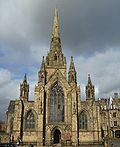| Worsley Court House | |
|---|---|
 Worsley Court House | |
 | |
| General information | |
| Location | Worsley, Greater Manchester, |
| Coordinates | 53°29′58″N2°22′54″W / 53.4994147°N 2.3817829°W |
| Completed | 1849 |
| Owner | Salford City Council |
Worsley Court House is a conference and weddings venue in Worsley, Greater Manchester, England. Built in 1849 for Francis Egerton, 1st Earl of Ellesmere as the local manor court, it was later used as a magistrates' court. In 1966, it was granted Grade II listed status. [1]



